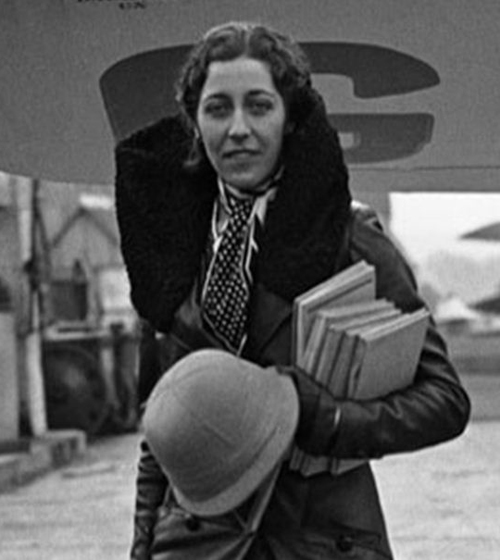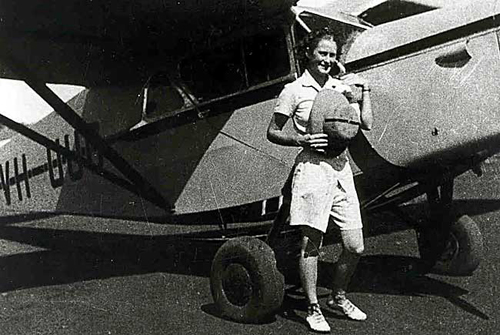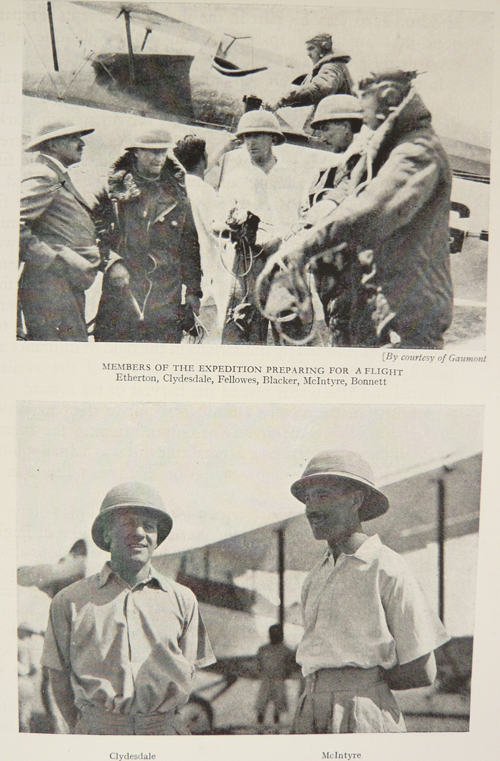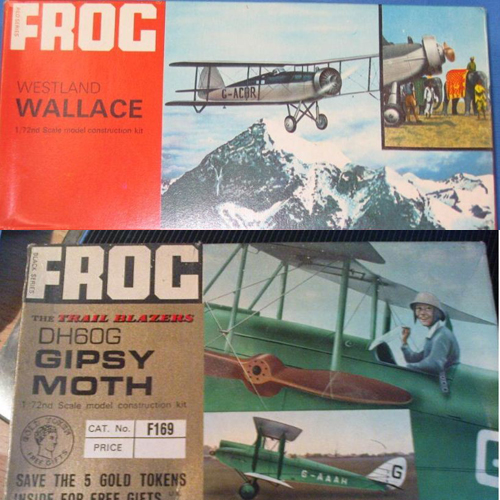Sometimes, research leads to unexpected results. This was the case while trying to find some more photographic evidence for the use of the “Helmet, Cork, Aviation”. Peter Suciu has already written about the two different types of this interwar period Royal Air Force equipment (here) but obviously the helmet was not only used by His Majesty´s Forces but was also popular with civilian users.
Known things can appear in a new light – like the book First over Everest! The Houston-Mount-Everest Expedition, 1933. Having last read it 20 years ago, and since then kept in the bookshelf, it rang a bell concerning the aviation helmet. Its subject is the first flight over Everest in a Westland Wallace biplane. Of course, on the actual flight over that mountain, heated clothing and oxygen masks were worn because of the temperature at high altitude. But besides, there are some nice group pictures of the pilots and other members of the crew during the preparations in India. And indeed, in some of these the pilots wear this South African polo type helmet – maybe the one issued by the Air Ministry? Through the ear flaps are not visible, they may be there but simply not visible because they were bent inside when the helmet was worn on the ground? A pity one cannot prove that, but there is no other explanation for using this specially shaped helmet and they are aviators flying in an open plane in a tropical country. What else should it be?
Known as Lord Clydesdale in 1933, the chief pilot of the expedition was then a member of the Royal Auxiliary Air Force – a military flight pith helmet would therefore not be unusual. Later he was to become Air Commodore the Duke of Hamilton.
Another picture in the book, showing elephants passing by the plane, captioned “Ancient transport mingles with the modern” rang another bell. The old enthusiastic plastic modeler was instantly reminded of a 1960s “Frog” kit of the Westland Wallace. Looking that up in the internet, it turned out, that indeed Frog´s artist had exactly copied that picture as well as that of the plane and turned it into a box art drawing. By pure chance another Frog box popped up too, showing a Gipsy Moth biplane with a female pilot – wearing this aviation pith helmet!
Had Frog once used historical material as a sample, why not again? So “gipsy moth female pilot” was entered in the search engine and one after another they turned up: The famous aviatrixes of the 20s and 30s – the fly girls coming from all parts of the British Empire!
Frog´s box artist used an image of Amy Johnson, CBE. Born in England in 1903, she was a famous pilot and set some long distance-record flights. She died in 1941 when serving with the Air Transport Auxiliary. There is another picture where she holds a pith helmet.

Again no ear flaps visible, but obviously as well a military “Cork Helmet, Aviation”, used by Johnson.
Jean Gardner Batten CBE OSC, 1909-1982, was from New Zealand. She became known for some solo flights, especially the first-ever solo flight from England to New Zealand.

In their time, the female aviation pioneers were well known and popular like film stars. Who wonders viewing this picture of Jean Gardner Batten?
A unique thing: Even a movie exists where Batten can be seen with an aviation pith helmet in Brazil. The whole film is worth watching, but for those to impatient – the helmet appears after 0.55 seconds:
httpv://youtu.be/9ESVfJxCHh0

No aviaton helmet visible on this photograph from Batten´s book My Life, but the uniformed Dutch colonial officer´s helmet is of some interest. Original caption: “AT RAMBANG WITH THE DUTCH ADMINISTRATOR, M. BARKER, AND HIS PARTY”
By the way: There are other contemporary aviatrixes like Karen Blixen, immortalized by the movie Out of Africa, or her friend Beryl Markham, British who was born in Kenya. Markham made the first solo flight across the Atlantic and wrote an autobiography, praised by Hemingway, another adventurer. Most astonishingly, a picture of those two with aviation pith helmet could not be found – yet; for, as could be shown, researching does sometimes take surprising directions.

Nancy Bird Walton, in 1933 the youngest Australian woman with a pilot’s licence, then aged 17,obviously does not prefer military equipment – at least in this photo. Who knows other pictures?

Whereas this could be a flight helmet converted from a Bombay Bowler type? But this is just a suspicion.
Was that military sun helmet ever offered as a commercial product? This is doubtful. Today, many people use military sleeping bags or boots for many purposes. Why not in the 20s and 30s as well? And one has to remember: There was not a real market – flying was a private pastime of only very few people then. They were admired and still appeared glamorous – especially the aviatrixes.
Roland Gruschka







